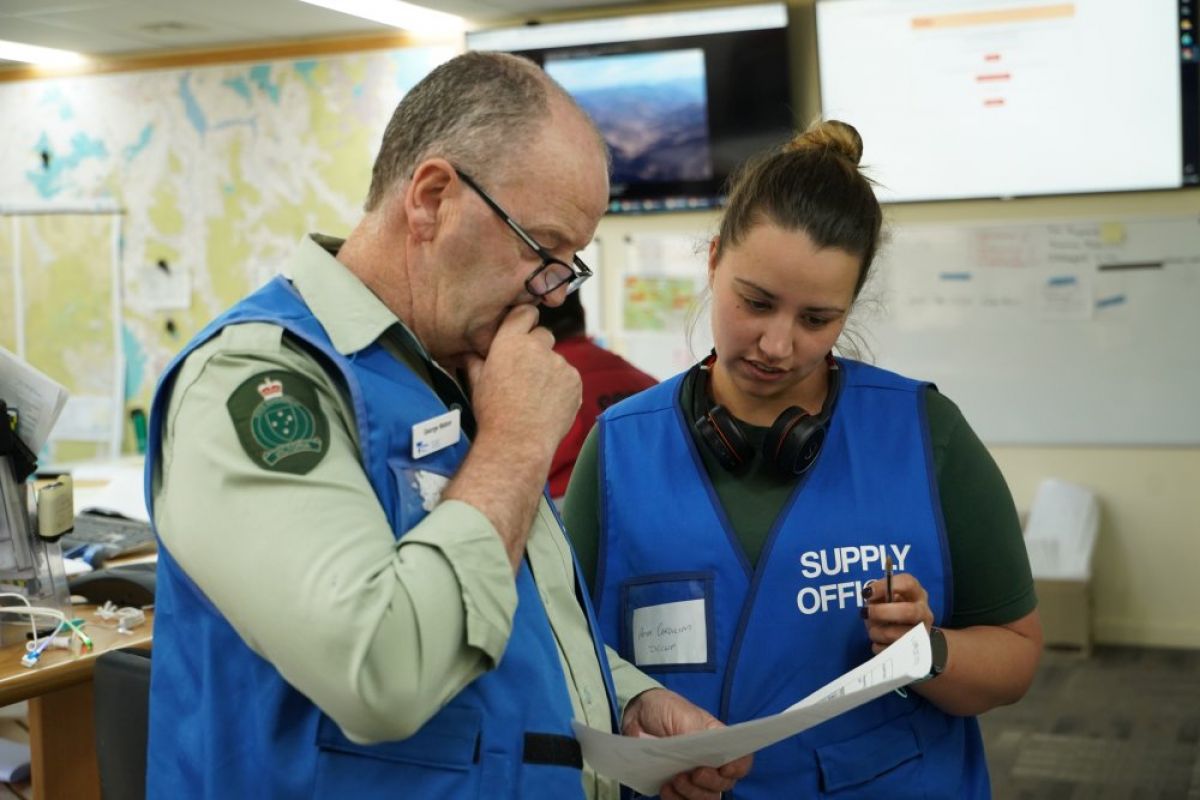
We have thousands of amazing people across the state who play critical roles in our Incident Control Centres (ICCs), Regional Control Centres (RCCs) and our State Control Centre (SCC).
Victorian emergency management operates at three tiers – Incident, Region and State. This structure ensures we have strong cooperation and coordination at all levels of an emergency.
This means everyone knows their role and can play their role when an emergency starts. We have:
- One SCC, located in Melbourne – headed up by a State Response Controller, appointed by the Emergency Management Commissioner
- Eight RCCS, located in Geelong, Wendouree, Bendigo, Benalla, Traralgon, Dandenong South, Burwood East, Lilydale, Melton – each headed up by a Regional Controller
- 47 ICCs, located in all corners of the state, everywhere from Mildura to Orbost – each headed up by an Incident Controller
Over the past few weeks these centres have been flat out responding to the ongoing fire activity across the state – particularly our ICCS in Gippsland and North East Victoria. A big shout is needed for our teams in Bairnsdale, Orbost, Swifts Creek, Heyfield, Wodonga, Tallangatta, Ovens and Mansfield.
Roles performed in our ICCs include the areas of planning, intelligence, public information, operations, investigation, logistics and finance.
As you can imagine, this is a huge undertaking and includes everything from issuing warnings to the community, arranging where firefighters will be deployed to, setting up base camps, finding accommodation for hundreds of people, working out where we need aircraft, monitoring weather conditions, and so much more. The Incident Controller and their Incident Manager Team (IMT) have several tasks to address if they are to successfully resolve the incident being managed. These include:
- building a picture of what has happened, what is happening and what is likely to happen
- deciding what needs to be done and how it will be done
- preparing a plan that captures those decisions
- gathering the resources necessary
- implementing the plan and monitor its progress
- keeping people and agencies informed of all these actions
- maintaining records of their deliberations and decisions
- managing environmental impacts and consequences of the response effort, and initiating and support the relief and recovery efforts for affected communities.
Well done to all our amazing team members working tirelessly in these important roles! While their fire fight does look a bit different, it is equally as important to make things run smoothly. All this work is underpinned by our State Emergency Management Priorities.These priorities provide clear direction on the factors that are required to be considered and actioned during response to any emergency.
The intent is to minimise the impacts of emergencies and enable affected communities to focus on their recovery as early as practicable. The State Emergency Management Priorities are:
- Protection and preservation of life is paramount. This includes safety of emergency services personnel; and safety of community members including vulnerable community members and visitors/tourists located within the incident area
- Issuing of community information and community warnings detailing incident information that is timely, relevant and tailored to assist community members make informed decisions about their safety
- Protection of critical infrastructure and community assets that supports community resilience
- Protection of residential property as a place of primary residence
- Protection of assets supporting individual livelihoods and economic production that supports individual and community financial sustainability, and
Protection of environmental and conservation assets that considers the cultural, biodiversity and social values of the environment.




Page last updated: 07/02/20